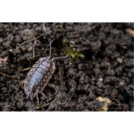
Students investigate how living and non- living elements interact with one another in an ecosystem by observing interactions in the garden.
- Subject:
- Life Science
- Material Type:
- Lesson Plan
- Author:
- Out Teach
- Date Added:
- 07/22/2021

Students investigate how living and non- living elements interact with one another in an ecosystem by observing interactions in the garden.
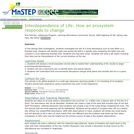
This field activity asks students to examine and interpret a given environmental site where a disturbance (fallen tree, beaver dam etc.) has taken place.
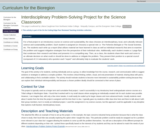
Students are assigned unique roles and work independently to solve a complex problem from the perspective of their role (i.e. sociologist, educator, historian, etc.) Students then work collaboratively to present their findings and action plan to the "tribal council".
(Note: this resource was added to OER Commons as part of a batch upload of over 2,200 records. If you notice an issue with the quality of the metadata, please let us know by using the 'report' button and we will flag it for consideration.)

This video explores what happens when exotic animal and plant species are introduced into ecosystems, and the impact of introduced species on biodiversity. Created by California Academy of Sciences.
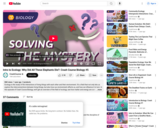
Ecology is the study of the interactions of living things with each other and their environment. It’s a field that not only lets us explore the interconnections between living things, but also how our environment affects us, and how we influence it in turn. In this episode of Crash Course Biology, we’ll get an overview of the field of ecology, see how matter and energy are conserved and transferred through ecosystems, and follow an ecological mystery surrounding the deaths of hundreds of elephants in Botswana, Africa.
Chapters:
An Ecological Mystery
Biotic & Abiotic Factors
Ecosystems
Fields of Ecology
Trophic Levels
Energy Flow through Ecosystems
Review & Credits
Credits
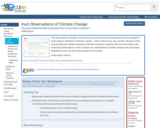
This video features changes in the land, sea, and animals that are being observed by the residents of Sachs Harbour, Northwest Territories, Canada â many of whom hunt, trap, and fishâbecause of their long-standing and intimate connection with their ecosystem. Scientists interview the residents and record their observations in order to deepen our understanding of climate change in the polar region. Background essay and discussion questions are included.
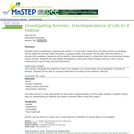
This activity is a field investigation where students will observe, discuss, and gather evidence on how environmental changes affect animals that live in that habitat.

In this lab activity, students use brine shrimp as a proxy for krill to study how environmental factors impact behavioral responses of krill in the unique environment of Antarctica.
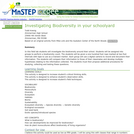
In this field lab students will investigate the biodiversity around their school. Students will perform a biodiversity count using transect line. The students will develop multiple hypotheses relating to biodiversity and propose additional procedures for studying, collecting and testing these questions.
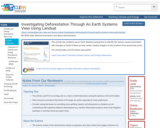
This activity has students use an Earth Systems perspective to identify the various causes associated with changes to Earth's forests as they review Landsat imagery of site locations from around the world.
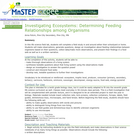
This activity is a field investigation in which students identify organisms and their energy sources. Students collect data and create a food web that explains how the organisms in their ecosystem are related.
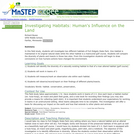
This investigation is a field study where students compare the diversity of plants and insects in a naturally existing habitat to that of a human altered habitat.

This assignment sequence seeks to stimulate students' thinking and writing about food production in the western Washington bioregion through a series of activities combining readings, class discussion, fieldwork, and writing assignments. Collaborative work in and outside of class culminates in students' interviewing local farmers and vendors at farmers markets and writing a surprising informative essay.
(Note: this resource was added to OER Commons as part of a batch upload of over 2,200 records. If you notice an issue with the quality of the metadata, please let us know by using the 'report' button and we will flag it for consideration.)
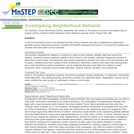
This activity is field investigation where students map a neighborhood wetland and generate various watershed questions. Students identify engineered structures in or around this wetland and consider how flood water can be controlled.
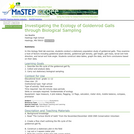
This activity is a field investigation where students conduct biological sampling on goldenrod galls and form conclusions.
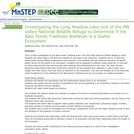
In this investigation, students gather biotic and abiotic data and samples in the field, develop an experiment to test another abiotic factor in the lab, synthesize group data, interpret their findings and make a claim on the health of the wetland ecosystem.
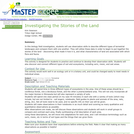
Students use an inquiry approach to describe the major biomes of Minnesota before taking a look at adaptations that make organisms successful in their environments.

This resource was created by Alison Pavelka, in collaboration with Dawn DeTurk, Hannah Blomstedt, and Julie Albrecht, as part of ESU2's Integrating the Arts project. This project is a four year initiative focused on integrating arts into the core curriculum through teacher education, practice, and coaching.
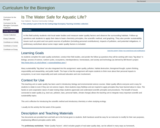
In this field activity students ponder sustainability issues such as point and non-point sources of pollution (including personal contributions), impacts of pollution, and potential mitigations.
(Note: this resource was added to OER Commons as part of a batch upload of over 2,200 records. If you notice an issue with the quality of the metadata, please let us know by using the 'report' button and we will flag it for consideration.)
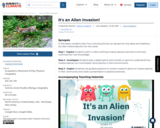
SYNOPSIS: In this lesson, students learn how cultural practices can spread not only ideas and traditions, but also invasive species into new areas.
SCIENTIST NOTES: This lesson gives students the go-ahead to explore the underlying cultural practices that could spread invasive species and ways to reduce the spread to maintain a healthy and balanced ecosystem. All materials embedded in the lesson are factual and accurate. That being so, this lesson has passed our science credibility review process and is recommended for teaching.
POSITIVES:
-This lesson features kinesthetic learning as students play Three Steps Forward, One Step Back.
-Students will develop a strong connection to self and community through learning about invasive species in their community.
-This lesson features excellent vocabulary development.
-Students learn through multiple games.
ADDITIONAL PREREQUISITES:
-One-to-one technology or cardstock with art supplies are required for poster creation.
-Students need access to research materials such as the Internet and/or books about invasive species.
DIFFERENTIATION:
-Groups of students with mixed abilities can collaborate on their educational posters.
-Possible Extension: Do a campus tour and have students take notes on species that could be invasive.